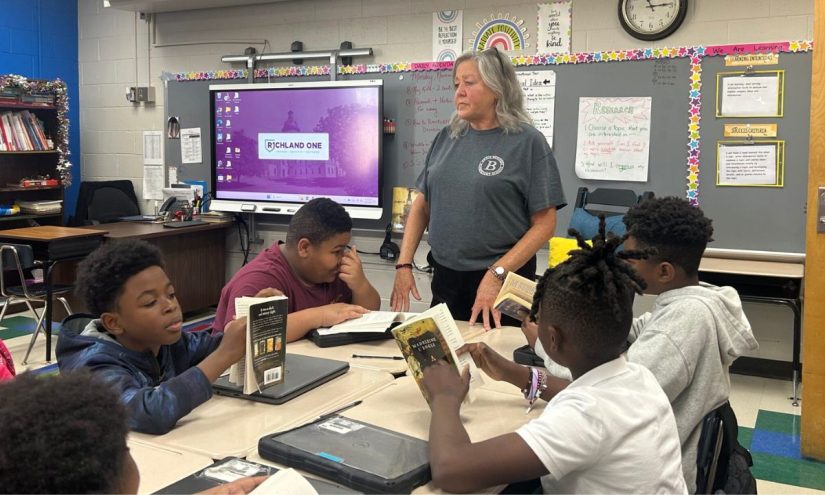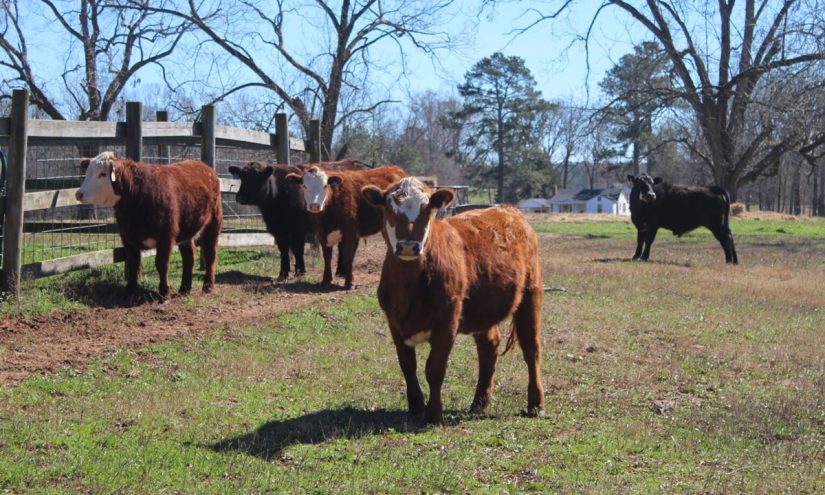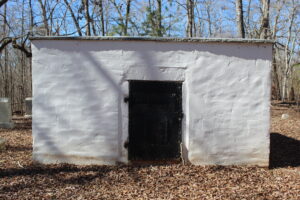Get stories like this delivered straight to your inbox. Sign up for The 74 Newsletter
COLUMBIA — South Carolina high schools posted their highest graduation rate in a decade, but a quarter of students still aren’t ready for college or the workforce, according to state report card data released Monday.
Generally, South Carolina’s schools improved compared to last year, according to the statewide data that gauges how well schools perform based on test scores, classroom surveys and student growth, among other metrics. Education officials applauded a 10-year high in the number of students graduating on time — meaning they graduated four years after entering ninth grade — while saying they would continue pushing for programs to improve how well those students were prepared for life after high school.
“We have to make sure that our diplomas are worth more than the piece of paper that they are written on,” said state Superintendent Ellen Weaver.
Overall, 270 schools rated “excellent” this year, an increase from 232 last year. The bottom tier of “unsatisfactory” decreased from 49 to 31, and “below average” schools dropped from 186 to 145.
Any time the number of schools in the lowest tier shrinks, that’s good news, since it means children across the state are getting a better education, said Patrick Kelly, a lobbyist with the Palmetto State Teachers Association.
“There’s encouraging information here,” Kelly said of the report cards.
Officials from the state Department of Education and the independent Education Oversight Committee, which is tasked by state law with grading schools, announced the results at Annie Burnside Elementary School in Columbia, which jumped two tiers this year, from “average” to “excellent.”
At the Richland District One school, 83% of the 306 students live in poverty. The school’s big rating boost was due to significant student improvement, as shown by their test scores, and results on a survey about the school’s general environment, according to its report card.
“Our academic gains are no coincidence,” said Principal Janet Campbell. “They are the result of setting measurable goals, challenging our students to reach them and supporting them along the way.”
Graduation rates and readiness
This year, 87% of high schoolers graduated on time, up from 85% last year. That’s worth celebrating, Kelly said.
“Our goal should be for every student in South Carolina who has the ability to earn a high school diploma,” he said.
Three-quarters of students were ready for either college or a career after graduation, a gain of 3 percentage points, according to the state data. Less than a third were ready for both.
Although the gap between students who are graduating and those who are prepared for what comes next continues to shrink slightly, state officials remain concerned about it, Weaver said.
“At the end of the day, we want our students, when they leave a South Carolina high school, to know that that diploma that they carry is a diploma of value,” Weaver said. “This is a diploma that is going to ensure that they are ready to go onto whatever post-secondary success looks like for them.”
All 11th graders in the state take a test assessing skills commonly needed for jobs, divided into four areas: math, reading, understanding data and “soft skills,” which include aspects of a job such as dressing professionally and working well with others. Results are graded from 1 to 5, with higher scores suggesting students are ready to pursue more careers.
Students are considered career-ready if they receive a score of 3 or higher on that test, earn a technical education certificate, complete a state-approved internship or receive a high enough score on the Armed Services Vocational Aptitude Battery to enlist in the military. This year, 73% of students met that benchmark, compared to 70% last year, according to report card data.
College readiness is based on a student’s score on the ACT or SAT college entrance exam, college credit earned through a dual-enrollment course and/or scores on end-of-course Advanced Placement tests.
One-third of graduating students were college-ready, which is on par with at least the past five years, according to state data. The rate of high school students applying for college also continued to decrease, with 59% reporting filling out applications this year, compared with 61% last year.
A gap between graduation rate and readiness for the next step suggests schools are sometimes passing students without actually imparting the skills they need to succeed in life, Kelly said.
For instance, district policies setting minimum grades teachers can give makes it easier for students to pass their classes, even if they haven’t actually done the work, Kelly said. Alternatives for students who fail tests or classes are sometimes easier, meaning a student can catch up without actually learning the same skills as their peers, he said.
“We’ve put some policies in place that make it harder to evaluate what a student knows and can do,” Kelly said.
Beginning this school year, students can follow a so-called pathway to earn credentials that build on each other every year, allowing students to learn more advanced skills meant to make it easier to find a job in the field they want to pursue, said April Allen, chair of the Education Oversight Committee’s governing board.
“At the same time, we recognize that strengthening the system must go hand-in-hand with addressing the barriers that keep students from wholly engaging in school,” said Allen, who’s also a government relations director for Continental Tire.
Chronic absenteeism and test scores
For example, the number of students who missed at least 10 days of school this year remained a concern, Allen said.
Around 23% of students were chronically absent, essentially the same number as last year. The more days of school a student misses, the less likely they are to perform as expected for their grade level on end-of-year tests, according to a report the committee put out last year.
Those tests, in turn, play a role in determining how well a school or a district is performing. Officials and teachers’ advocates credited the Palmetto Literacy Project and a change in how early educators teach reading for improving English scores, but math scores remain low, with less than half of third- through eighth-graders able to perform on grade level, according to state testing data.
Just over half the state’s high school students scored at least a C, which is a 70%, on their end-of-course Algebra I exams, often taken freshman year, according to report card data. Nearly 69% passed their English 2 exams, typically taken sophomore year.
While rooting for improvement, teachers’ advocates also warned against depending too heavily on a single exam score in deciding how well teachers and students are performing. A single, high-pressure exam at the end of the year is not necessarily the best indicator of school performance, said Dena Crews, president of the South Carolina Education Association.
“If people are making judgments based on that, they’re missing a whole lot about schools and districts,” Crews said.
Teacher support
The Department of Education plans to focus on teachers in 2026, Weaver said.
“The No. 1 thing that we have to do to support student learning is take care of our teachers,” Weaver said.
She is asking legislators to raise the minimum pay for a first-year teacher to $50,000, up from $48,500. Legislators have increased the pay floor in increments for years, with the stated goal of reaching $50,000.
Weaver is also asking for $5 million to continue a pilot program that awards teachers bonuses based on how well their students perform on tests. She also wants to start a program that offers extra pay to exceptional teachers who mentor others. The additional responsibility would be another way to earn more money without leaving the classroom to go into school administration, she said.
Supporting teachers is key in improving how well schools are performing, Kelly said. The promising results in this year’s report cards came after the first dip in teacher vacancies since 2019, he added.
“It should not be a surprise to see school performance improve as teacher vacancies go down,” Kelly said.
SC Daily Gazette is part of States Newsroom, a nonprofit news network supported by grants and a coalition of donors as a 501c(3) public charity. SC Daily Gazette maintains editorial independence. Contact Editor Seanna Adcox for questions: [email protected].
Did you use this article in your work?
We’d love to hear how The 74’s reporting is helping educators, researchers, and policymakers. Tell us how







